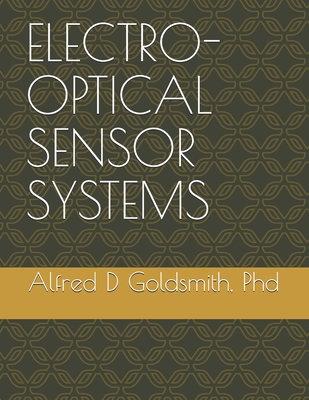You are here
Back to topElectro-Optical Sensor Systems: Including Geometric & Physical Optics, Electro-Magnetic Waves, Optics & Aberrations, Ifov, Fov, For, Radiometry & Phot (Paperback)
$34.49
This item is not available this time
This item is not available this time
Description
This book describes the analysis and modeling involved with the design, specification and evaluation of electro-optical systems and components. The emphasis is on imaging infrared sensor systems, with analytical models that include the radiation source, atmospheric transmission, geometric and physical optics, a detector, amplifier and optical noise analysis, and detection and false alarm probabilities. Much of the analysis goes beyond what is normally available in engineering texts; the noise analysis includes a practical detector/amplifier 1/f noise model based, in part on real world results. The last chapter, "Example Calculations," includes a complete model of an infrared sensor system working in the 3 to 5 micron atmospheric transmission window. The examples, which incorporate much of the work of the previous chapters, shows how to specify the frame and integration time, detection and false alarm probabilities, array size, the angular resolution and so forth. Once these parameters are specified, using practical inputs, the various noise contributors are calculated, and important system level parameters are determined. The parameters include the signal to noise ratio, the specific detectivity (which is related to the sensitivity of the system) and dynamic range. This book is, however, more general than a sensor system book. The "Geometric Optics" chapter includes thick and thin lenses along with the other standard topics. "Electromagnetic Waves & Physical Optics" starts with Maxwell's Equations and ends with reflection at an air-metal interface. The chapter on "Angular Characterization & Related Parameters" includes aberrations, stops, vignetting, f-number, numerical aperture, diffraction and various geometric blur diameters. It also includes determination of array size, field of view, integration time, time delay and integration, etc. In "Radiometry and Photometry," various radiometric and photometric functions are defined, starting at radiant and luminous energy and ending with the Etendue Theorem. Tristimulus Colorimetry and the Photopic/Scotopic Spectral functions are also discussed. In the chapter, "Radiometry Calculation Procedures," conversions between various radiometric quantities are illustrated using a grey-body source; the background, signal, scattered and emitted flux are also considered. In "Detector and Amplifier Parameters," the electrical bandwidth, reset time, all major noise mechanisms, the Responsivity, Noise Equivalent Power, Specific Detectivity, are some of the topics discussed. In System Parameters, there are compact discussions of Fourier Transforms, the Autocorrelation Function, the Nyquist Criteria, Modulation Transfer Functions, Atmospheric Transmission, signal to noise and threshold to noise (detection/false alarm probabilities). The last chapter is the example calculation of sensor performance.
